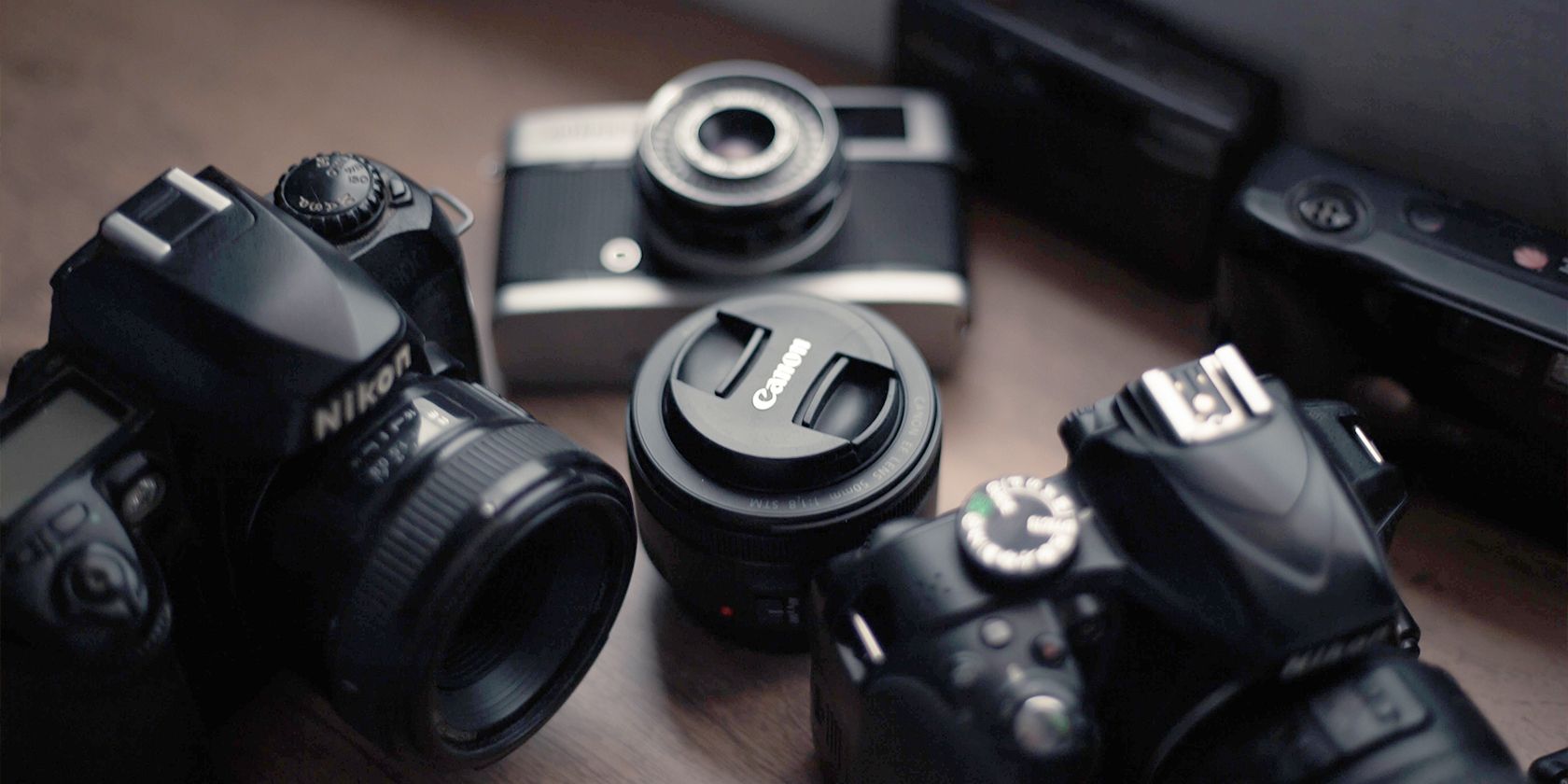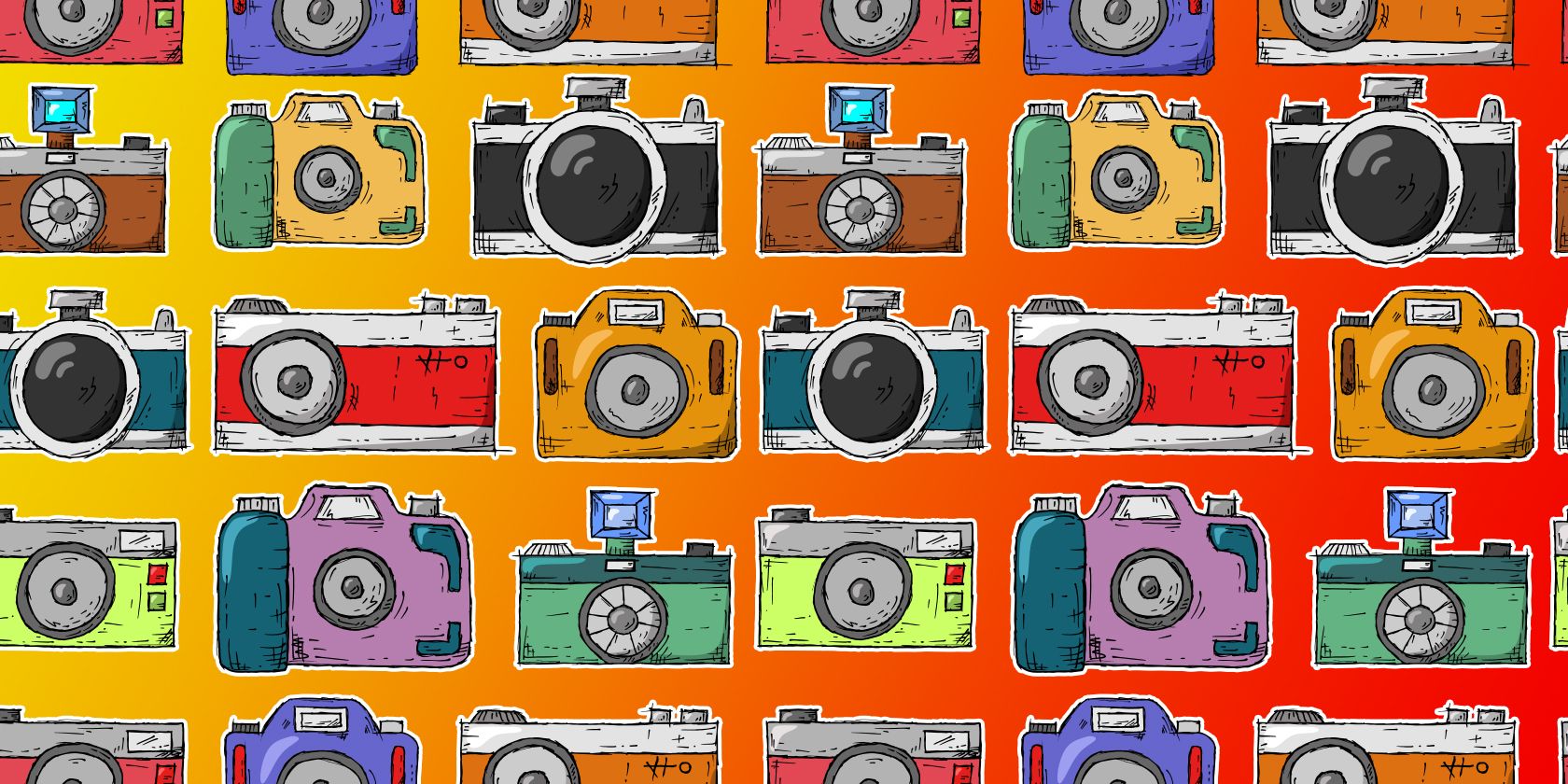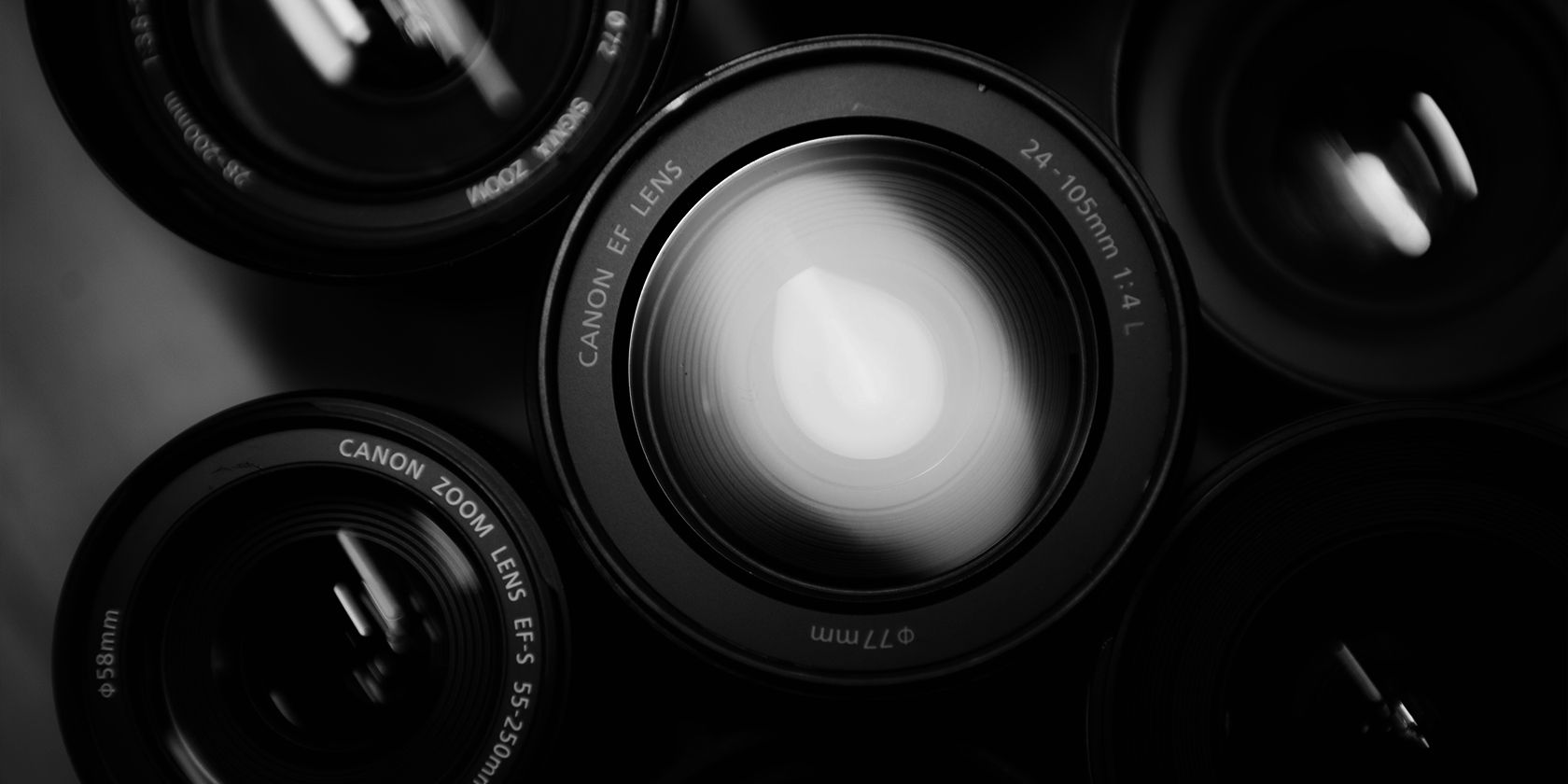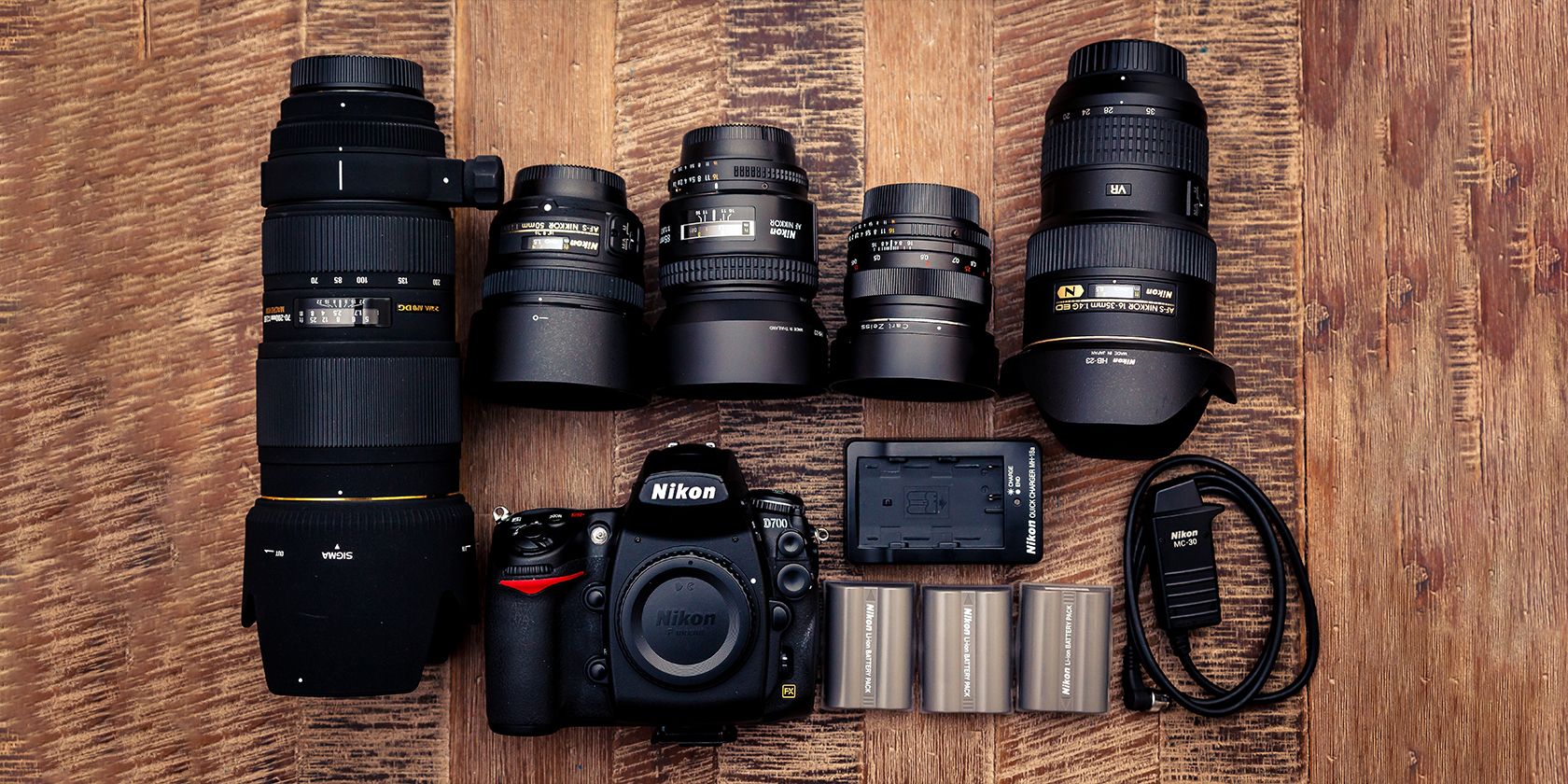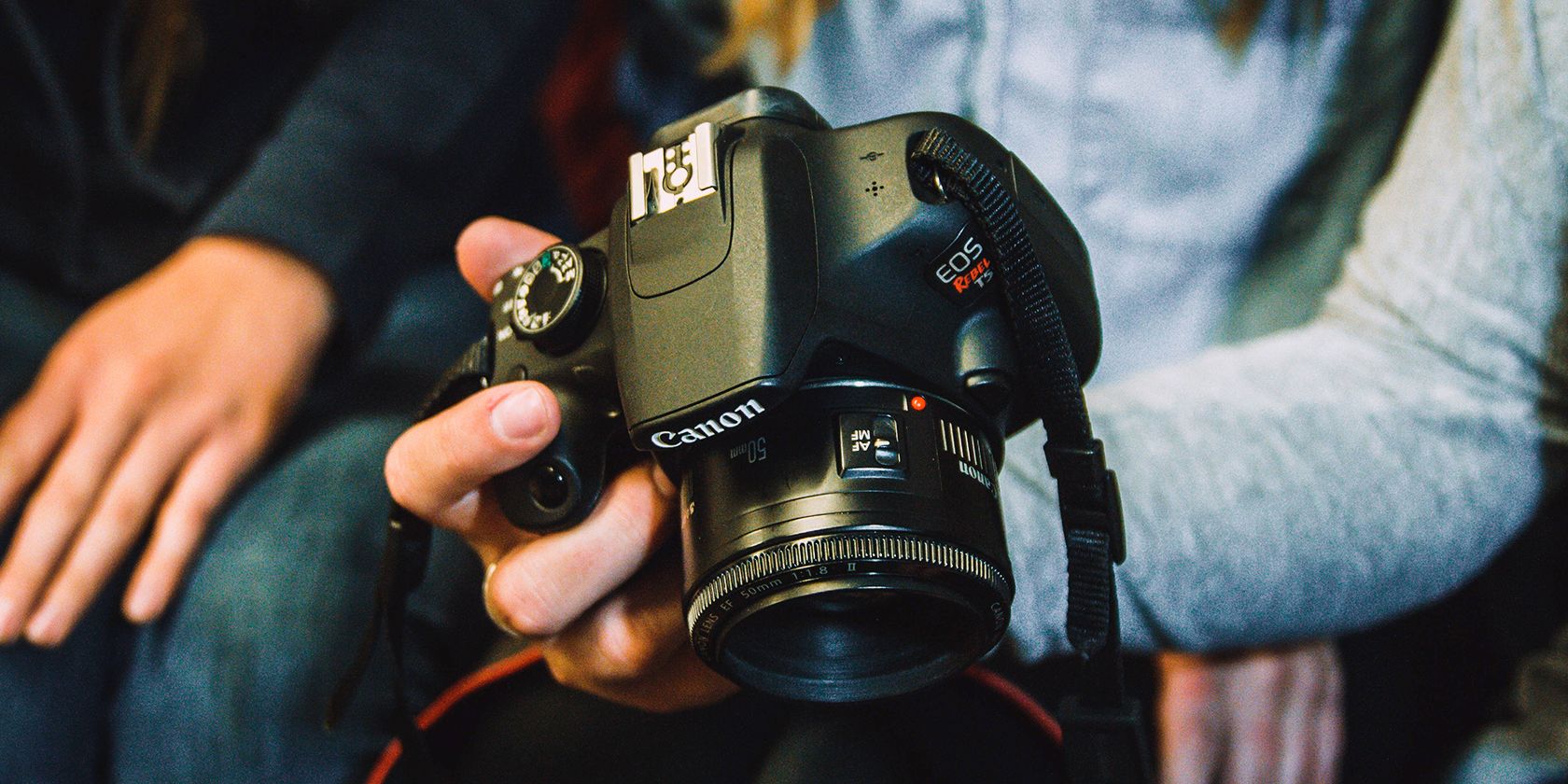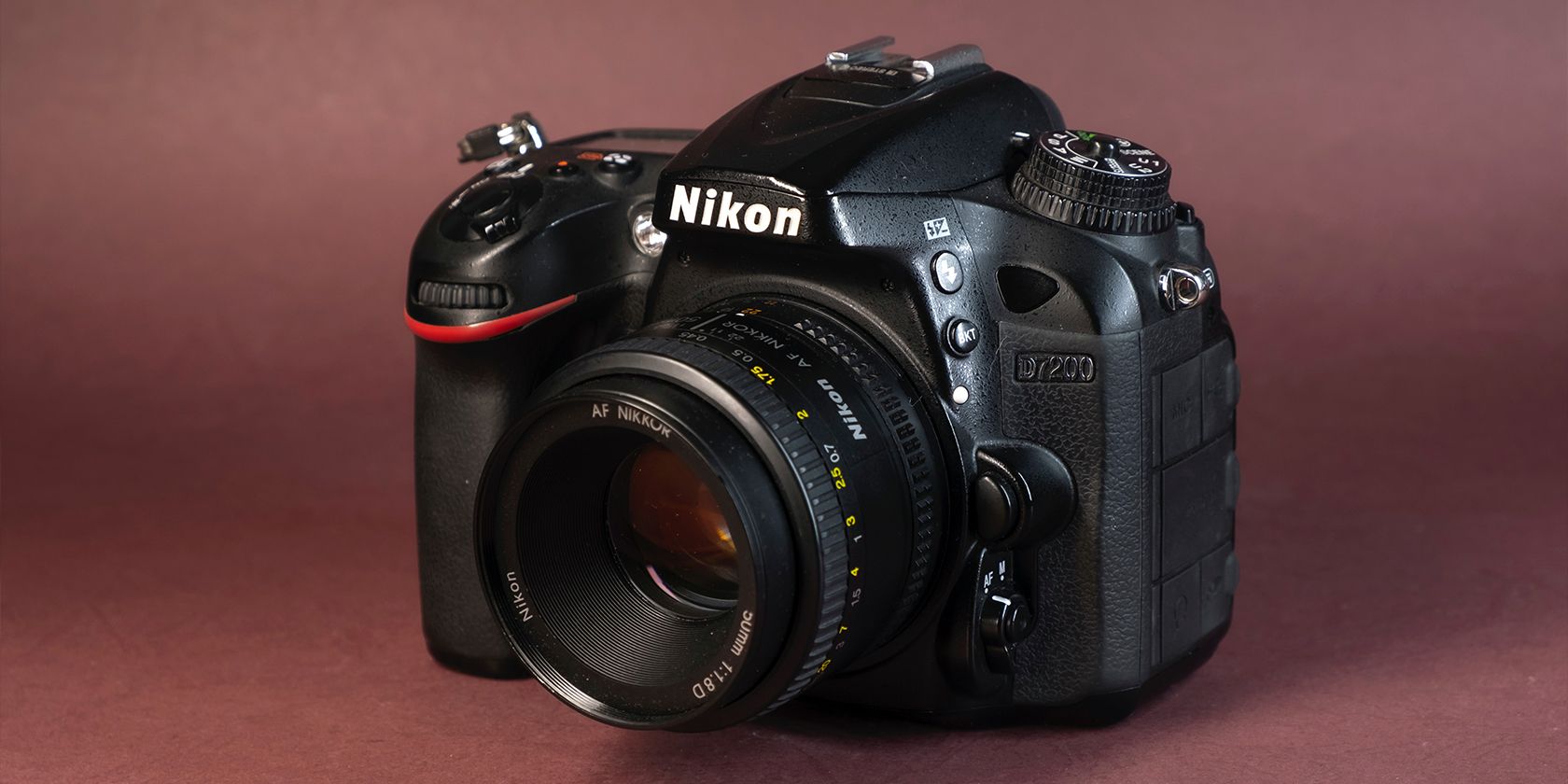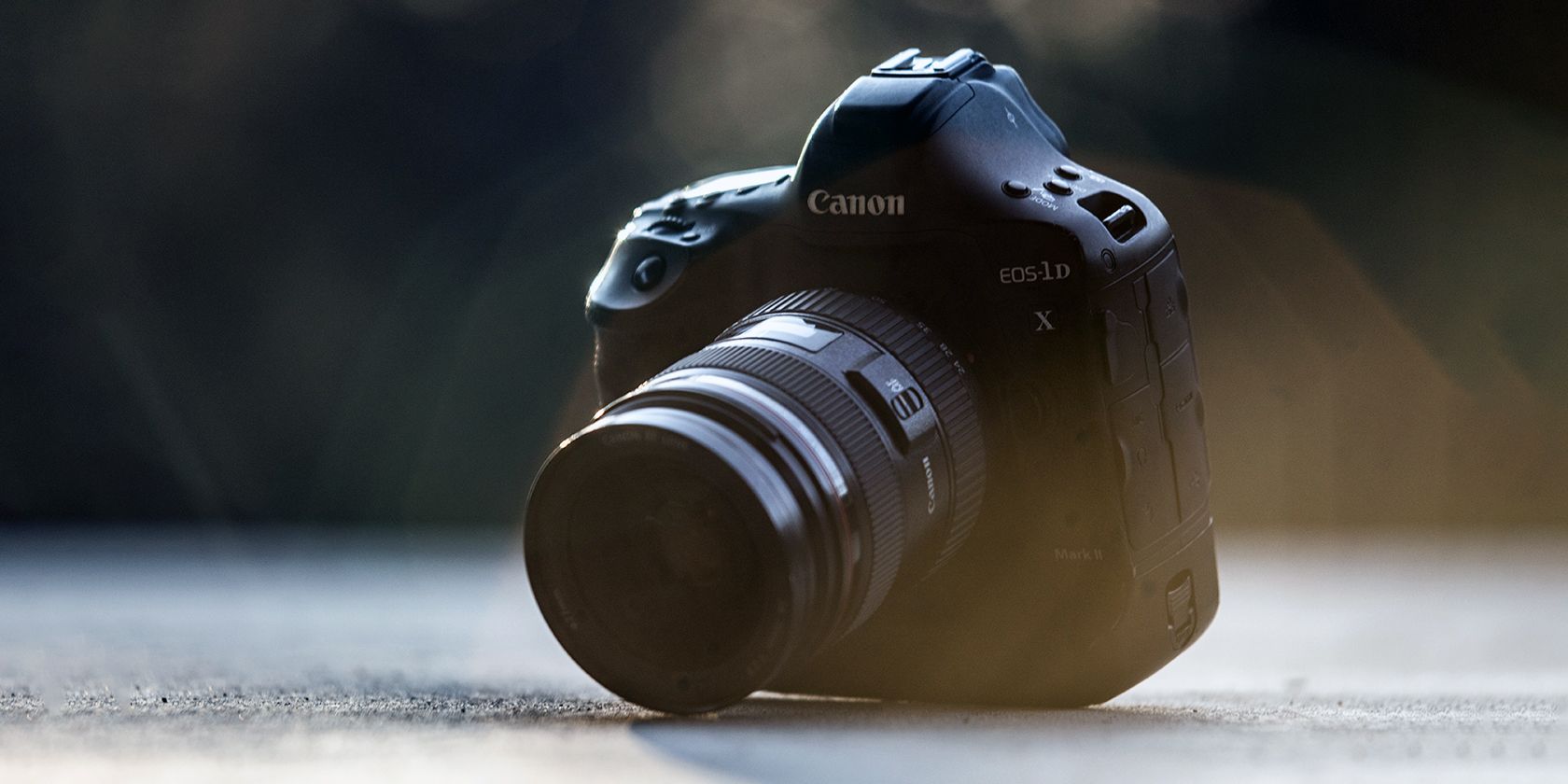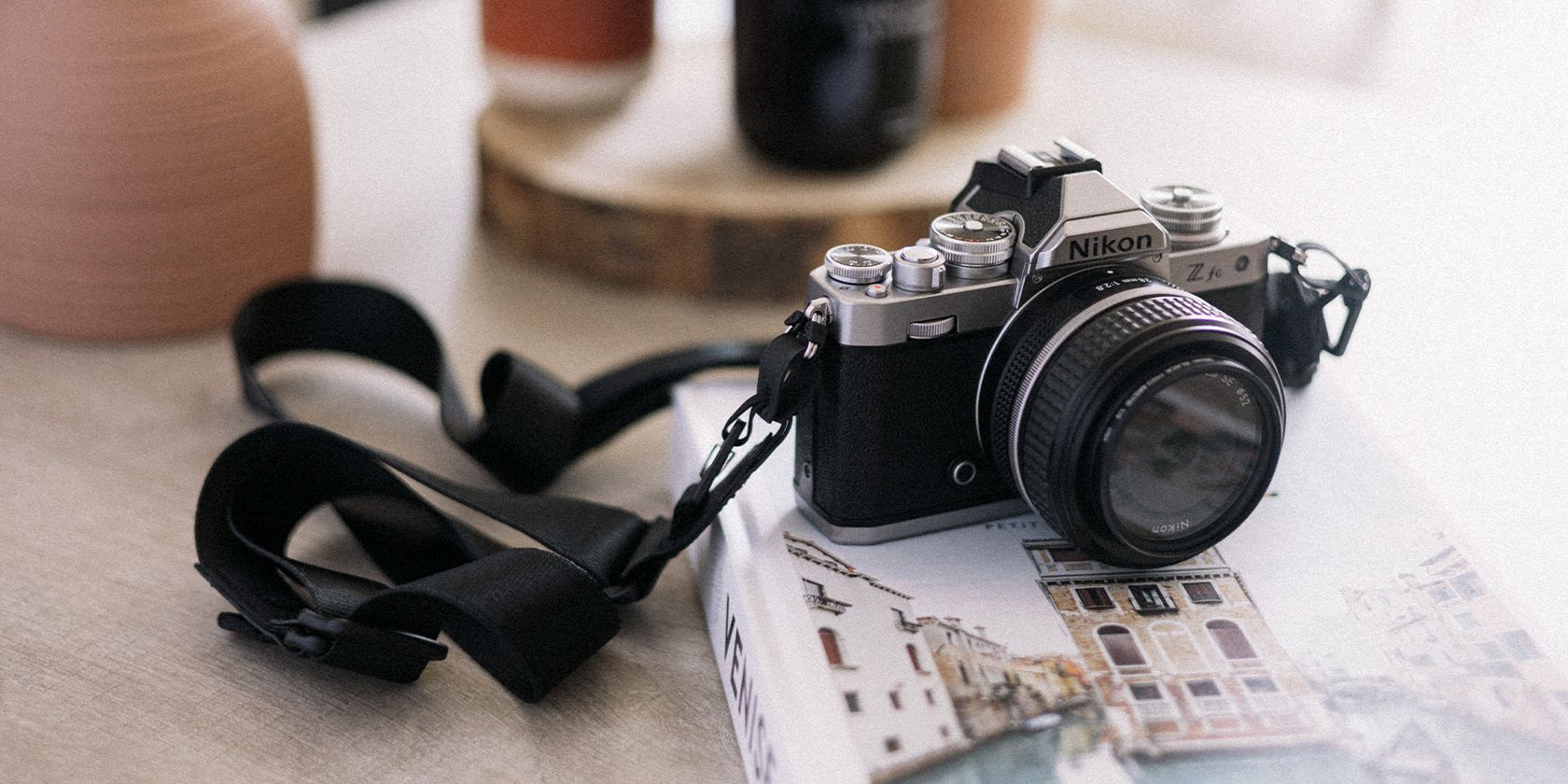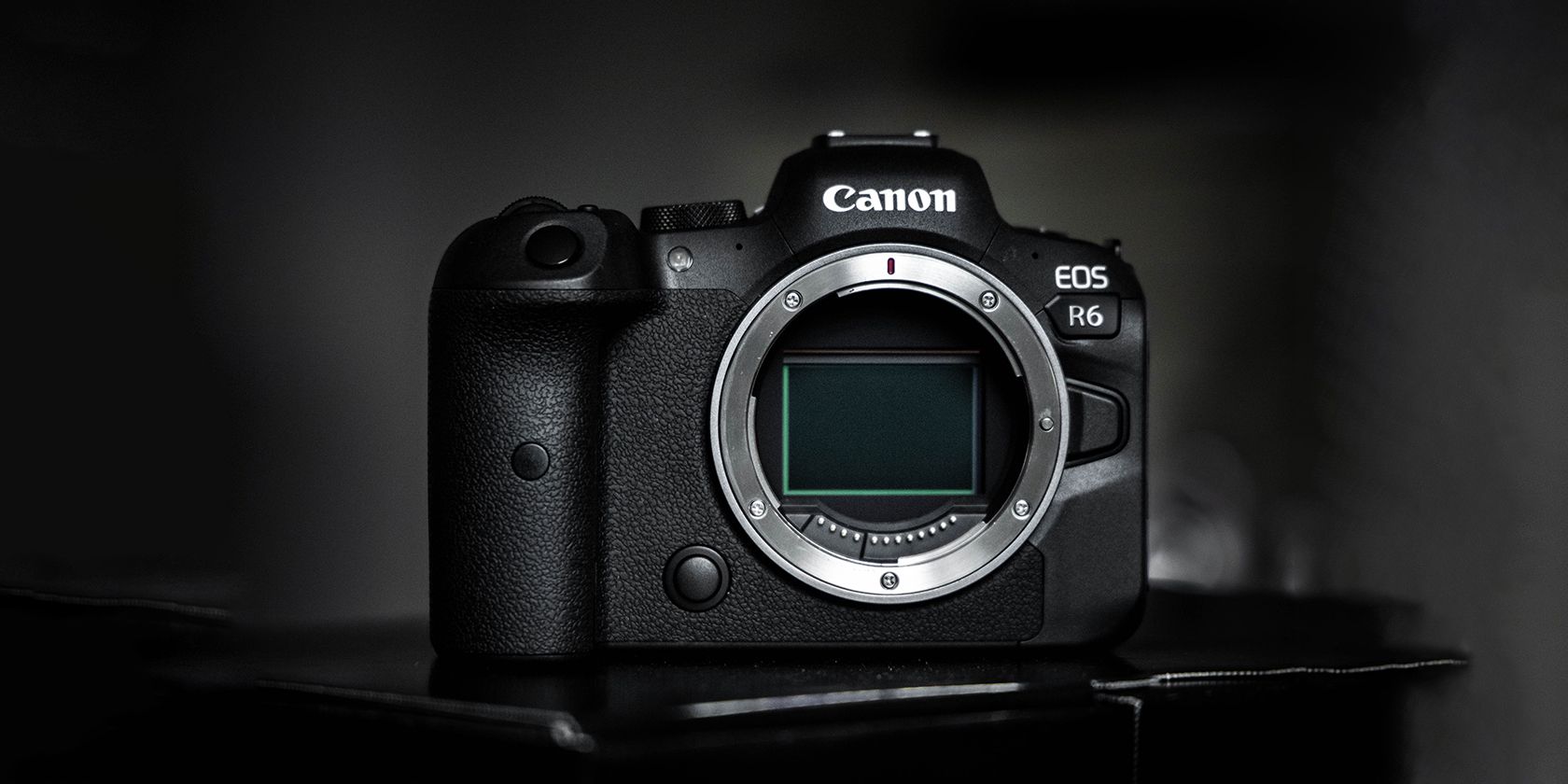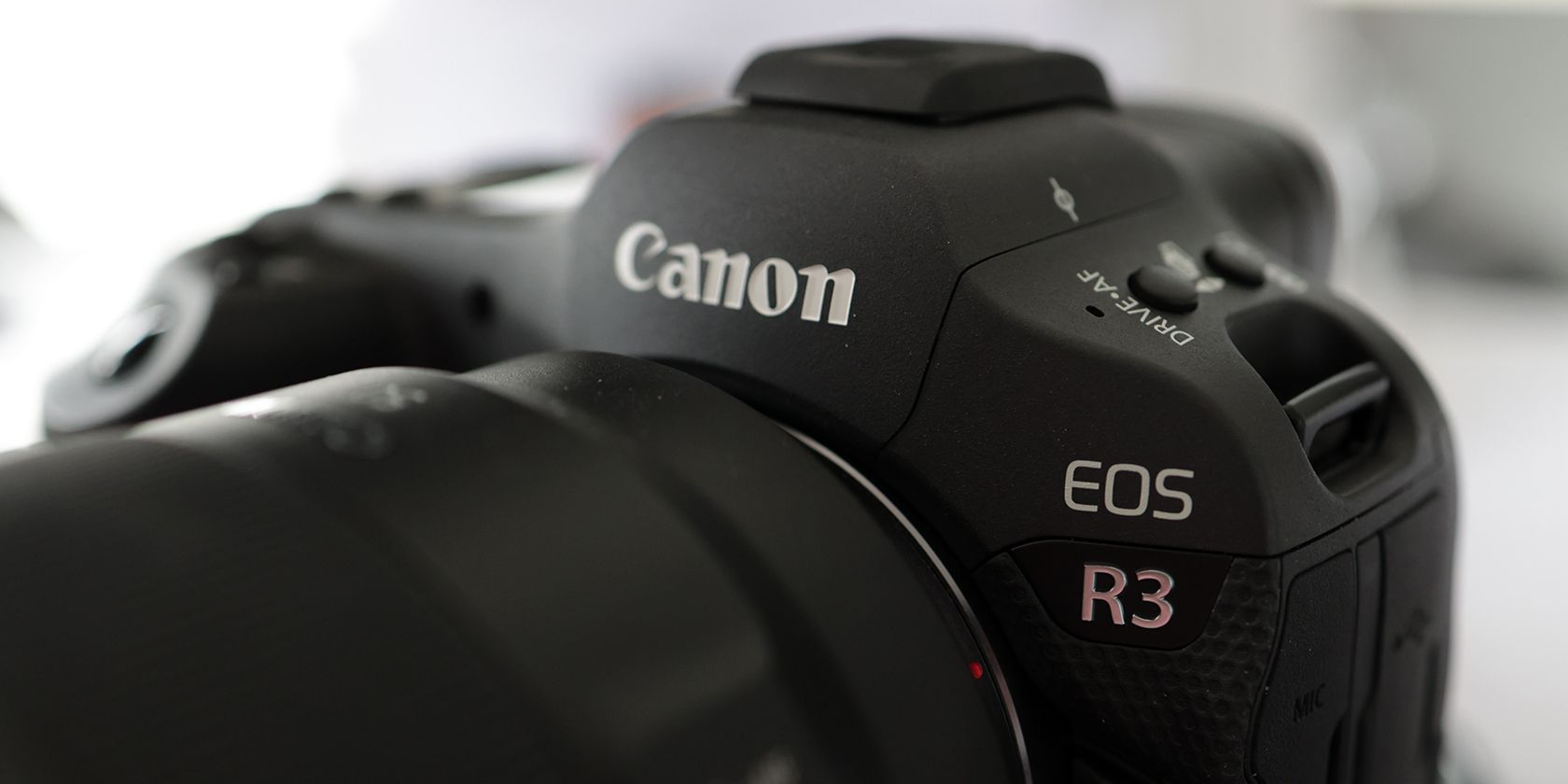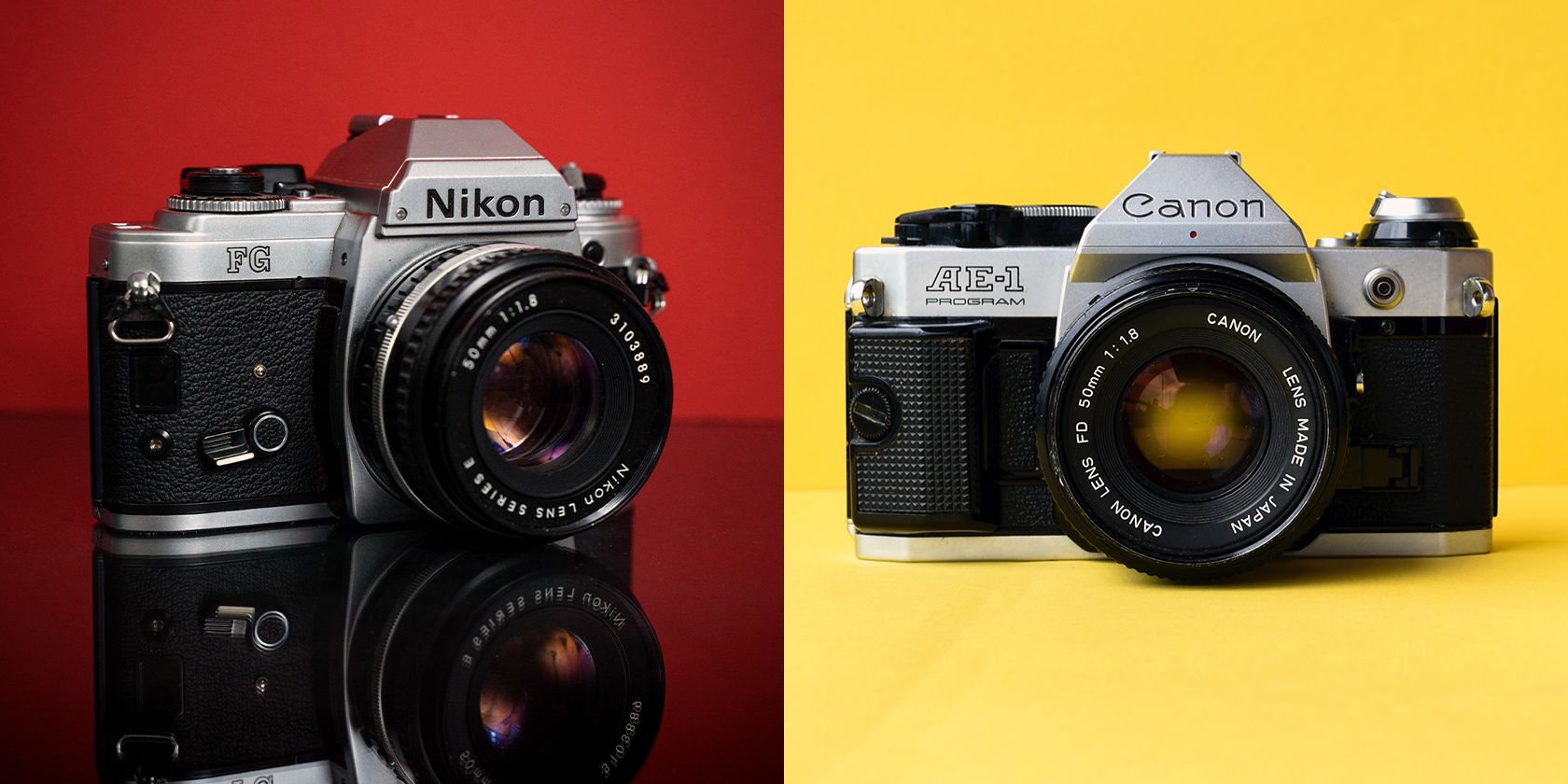You can't go wrong with a mid-range or flagship smartphone if you need an excellent camera for recording memories. But to level up your photography and turn it into art, consider getting a serious camera.
There are many great camera brands out there. Companies such as Sony, Fujifilm, Olympus, and Leica have made great consumer and professional cameras. However, you still can't beat Canon and Nikon when it comes to digital SLRs and lenses.
So, whether you plan to go pro or simply want to master photography as an artist, which camera brand should you choose? Canon or Nikon?
The Upgrade Path
Canon and Nikon are among the biggest camera manufacturers globally. According to Statista, Canon accounts for 45.8% of the total digital camera market share, with Nikon at 11.3%. But if you look at the subset of digital SLR sales, PetaPixel reports that Canon dominated it with a 59.8% market share, while Nikon trailed a far second at 33.9%.
Considering this, both Canon and Nikon did not gain these numbers by offering lousy products. That's why finding which camera brand is better according to their image quality or usability is moot and academic. These two attributes usually fall on user preferences, so it's highly challenging to be objective when comparing them across these two brands.
Instead, we'll focus on their camera and lens offerings. After all, if you buy an entry-level Canon or Nikon camera as a beginner, you'll likely follow that path when you upgrade.
Canon vs. Nikon: Lenses
While most new users would focus on camera performance, the lenses are the real deal when choosing a camera brand. That's because lenses will last longer than most camera bodies. They're also more expensive, with premium and professional lenses costing more than the camera.
Canon currently offers three lens lines in its store—the EF/EF-S mount, the EF-M mount, and the RF/RF-S mount. The EF/EF-S mount is designed for the Canon EOS DSLRs lineup, while the EF-M mount is made for the M-series mirrorless cameras. However, Canon is consolidating most of its cameras into the RF/RF-S mount for mirrorless cameras.
In total, Canon has 77 lenses across the three lines. There are 42 lenses under the EF/EF-S mount—eight EF-S lenses for APS-C DSLRs cameras with a 1.6x crop factor (what is crop factor?), eight consumer EF lenses, 20 professional EF lenses, and six specialty lenses.
The EF-M mount offers three zoom lenses and three prime lenses (what are prime lenses?), while the RF/RF-S mount has 29. The RF/RF-S mount is further broken down into three RF-S lenses for APS-C mirrorless cameras, eight consumer RF lenses, 17 professional RF lenses, and one specialty lens for creating 180-degree stereoscopic 3D VR.
You should note, though, that Canon is slowly winding down its DSLR business. This means some EF/EF-S lenses are either out of stock or on backorder.
Now let's look at Nikon lenses. We'll break down Nikon's lens offerings into the following: mount type (DSLR vs. mirrorless), auto-focus type (manual, in-body, or on-lens), and sensor format (DX 1.5x crop factor or FX full frame).
First, we'll count Nikon's DSLR lenses. It offers 21 lenses exclusive for its DX cameras, 38 autofocus lenses, 13 lenses that require a camera focus motor, and 11 manual focus lenses. This brings Nikon's lens options to a whopping 83—and that's just for DSLR cameras.
For its mirrorless line, Nikon has 35—five DX lenses and 30 lenses for both FX and DX sensor formats. This brings Nikon's total lens options to 118. Best of all, you can readily add most of them to your cart on the Nikon website.
Because of the sheer number and availability, we can say that Nikon bests Canon in the lens category. But whichever brand you pick, you must know how to choose the right lens for your photography style to know which ones to buy.
Winner: Nikon
Canon vs. Nikon: Digital SLR Options
Digital SLRs are generally divided into three categories: entry-level, mid-range, and professional-grade. Let's check out what Canon and Nikon offer below.
Entry-Level DSLRs
These are the most affordable cameras at $1,000 and below. It's also what most consumers buy as their first camera. It's usually at this point that determines whether a person will use Canon or Nikon for most of their lives. That's because once you're invested in a camera system, it's difficult and expensive to switch later on.
|
Canon |
Price |
Launch Date |
Nikon |
Price |
Launch Date |
|
EOS Rebel T7 |
$399.99 (kit) |
February 25, 2018 |
D3500 |
$649.95 (kit) |
August 3, 2018 |
|
EOS Rebel SL3 |
$649.99 |
April 10, 2019 |
D5600 |
$699.95 |
November 10, 2016 |
|
EOS Rebel T8i |
$749.99 |
February 12, 2020 |
Looking at our options, Canon offers three models, while Nikon only has two. The Canon EOS Rebel T7 and Nikon D3400 are the most affordable cameras from each respective manufacturer.
As you can see in the table above, the Rebel T7 is the most affordable camera in the bunch, which already includes a kit lens. Nikon's entry-level offering is more than 60% more expensive than Canon's cheapest model.
Because beginners typically buy the cheapest camera, we're giving the win to Canon here. This also has a domino effect, as these beginners will likely choose Canon cameras and lenses when they upgrade.
Winner: Canon
Mid-Range DSLRs
Mid-range DSLRs typically offer better performance and a more rugged build than entry-level cameras. They usually take more photos per second, have more input/output options, and use Pentaprisms for a brighter viewfinder. They're typically priced between $1,000 and $2,500.
|
Canon |
Price |
Launch Date |
Nikon |
Price |
Launch Date |
|
EOS 90D |
$1,199.00 |
August 28, 2019 |
D7500 |
$999.95 |
April 12, 2017 |
|
EOS 6D Mk II |
$1,199.00 |
June 29, 2017 |
D500 |
$1,599.95 |
January 5, 2016 |
|
D780 |
$1,999.95 |
January 7, 2020 |
At this level, Canon only has two offerings—the cropped frame EOS 90D and the full frame 6D Mk II. Both devices are priced at $1,199, although the latter launched at $1,399.
On the other hand, you have three options with Nikon. The D7500 and the D500 are cropped-frame DX cameras, while the D780 is a full-frame FX DSLR.
The mid-range category flips the results of the entry-level DSLRs—Nikon has more options and also offers the most affordable mid-range DSLRs. But if you want the cheapest full-frame DSLR, you should pick the Canon EOS 6D Mk II.
However, you should consider the entry dates of these cameras. The EOS 90D, which launched two years later than the D7500, consistently performed better in reviews. You can say the same for the 6D Mk II and D780—since the latter is newer, it has better performance.
Winner: Draw
Professional-Grade DSLRs
These are the most expensive DSLRs across the line, usually starting at $2,500 per piece. They also typically feature the best that a camera manufacturer can offer.
|
Canon |
Price |
Launch Date |
Nikon |
Price |
Launch Date |
|
EOS 5D Mk IV |
$2,499.00 |
September 2016 |
D850 |
$2,499.95 |
July 25, 2017 |
|
EOS-1D X Mk III |
$6,499.0 |
February 1, 2016 |
D6 |
$6,499.95 |
February 12, 2020 |
The Nikon D850 is only 95 cents more expensive than the 5D Mk IV. The same is true for the D6 and 1D X Mk III. At this level, the difference in image quality and performance is negligible.
The most likely decision point for most buyers of these cameras is what gear they already have. If they have a Nikon system, they'll likely go with Nikon, but if they have Canon lenses and flashes, they'll probably buy the 5D Mk IV or the 1D X.
Winner: Draw
Canon vs. Nikon: Mirrorless Cameras
As mirrorless camera technologies evolve, more users choose it over the traditional DSLR. After all, if you get the same quality and performance, why would you go with something heavier? In 2021, PetaPixel reported that Canon stopped the development of its EOS DSLRs. Nikon followed suit in 2022, according to a Nikkei Asia report.
Entry-Level Mirrorless Cameras
If you're buying an entry-level camera and want one that'll last a long time, you should go for an entry-level mirrorless one. Since both Canon and Nikon are pivoting toward this camera technology, you'll find several new mirrorless models at all levels of the camera spectrum.
|
Canon |
Price |
Launch Date |
Nikon |
Price |
Launch Date |
|
EOS M200 |
$549.99 (kit) |
September 25, 2019 |
Z 30 |
$609.95 |
August 5, 2022 |
|
EOS R50 |
$679.99 |
May 2023 |
Z 50 |
$759.95 |
October 10, 2019 |
|
EOS R10 |
$879.99 |
May 2022 |
Z fc |
$859.95 |
July 23, 2021 |
The M200 is the most affordable mirrorless camera. However, we don't recommend this, as the EF-M mount is being discontinued in favor of RF/RF-S lenses. The Z 30 is an excellent option as it's relatively new while still remaining affordable.
But if you want to enjoy the latest tech from Canon, you should pick the R50. Although it's more expensive than the Z 50, this APS-C mirrorless camera launched in May 2023. So, you should expect Canon to incorporate its latest developments here.
However, the better cheapest option is Nikon's Z 30. You could also go for the Z fc if you want a camera that mimics vintage cameras' manual dials and controls. Because of this, we'll award this category to Nikon.
Winner: Nikon
Mid-Range Mirrorless Cameras
Unlike mid-range DSLRs, which offer cropped and full-frame cameras, mid-range mirrorless cameras are exclusively full-frame.
|
Canon |
Price |
Launch Date |
Nikon |
Price |
Launch Date |
|
EOS R8 |
$1,499.00 |
February 2023 |
Z 5 |
$999.95 |
July 21, 2020 |
|
EOS R6 Mk II |
$2,499.00 |
November 2, 2022 |
Z 6II |
$1,699.95 |
October 14, 2020 |
Our comparison table shows Canon's offerings are substantially more expensive than Nikon's. However, this is probably because both cameras are newer—they're two to three years younger than the Z 5 and Z 6II.
Regarding performance, Canon's mid-range mirrorless cameras barely edge out Nikon's offerings. The EOS R8 stands as the best option here. Although it's more expensive than the Z 5, it's far newer and still more affordable than the Z 6II.
Winner: Canon
Professional-Grade Mirrorless Cameras
Buyers at this price point usually don't compare prices as they have to consider their other equipment. So, let's look at what Canon and Nikon offer for professionals.
|
Canon |
Price |
Launch Date |
Nikon |
Price |
Launch Date |
|
EOS R5 |
$3,399.00 |
July 9, 2020 |
Z 7II |
$2,599.95 |
October 14, 2020 |
|
EOS R3 |
$5,499.00 |
November 27, 2021 |
Z 9 |
$5,499.95 |
December 24, 2021 |
The top-end EOS R3 and Z 9 are priced similarly, but the EOS R5 is $800 more expensive than the Z 7II. These cameras' quality is around the same level, especially as they all launched around the same time.
Someone upgrading to a professional-grade mirrorless camera from mid-range or entry-level offerings will likely stay with the brand they're heavily invested in. However, if someone is considering switching to the other brand, the Nikon Z 7II's much lower price might be tempting.
Winner: Nikon
Is Canon or Nikon Better?
If we tally our scores, we get the following results: two points for a draw, two for Canon, and three for Nikon. With that, we see that Nikon has a slight edge over Canon. However, before you go out and purchase a Nikon camera, you should first try it out for yourself.
As a former professional photographer, I've always recommended that you try both brands to see which works better for you. After all, once you're invested in either brand, you'll likely stick to it for the rest of your life.
But, at the end of the day, you shouldn't worry about which camera brand will make you a better photographer. Whether you're a Canon or a Nikon user, you can build your photographic artistry if you know how to use your tools.

